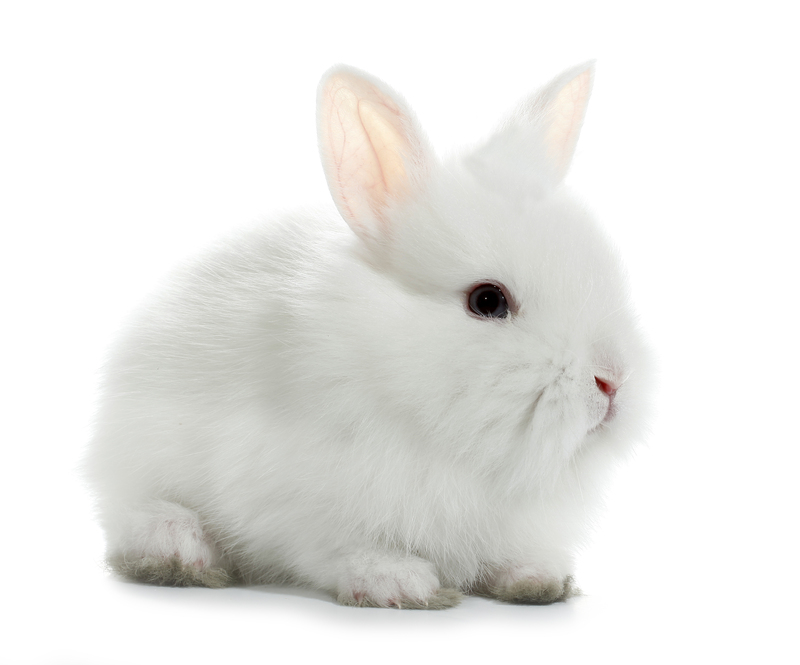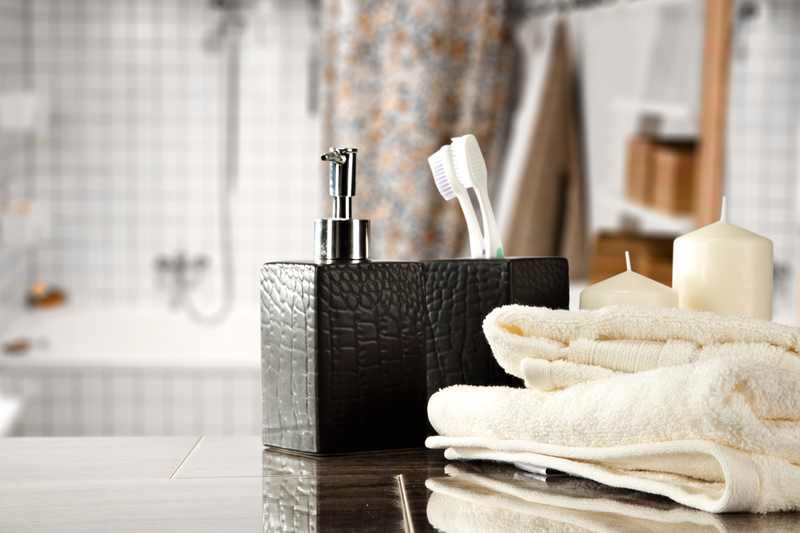How to Avoid Common Freezer Storage Mistakes
Freezing is a fantastic way to extend the shelf life of your favorite foods, reduce waste, and save both time and money. However, missteps in freezer storage can lead to unwanted food spoilage, freezer burn, and wasted groceries. Understanding how to avoid common freezer storage mistakes will ensure your food stays fresh and delicious for as long as possible. In this comprehensive guide, we'll discuss the most frequent freezer storage errors, how to prevent them, and tips to help you maximize space and taste.

Why Proper Freezer Storage Matters
The freezer is a busy household workhorse, but improper organization or techniques can undermine its effectiveness. Good freezer habits not only keep your food safe and appetizing, but they also help maintain nutritional value and save you money by preventing waste. Whether you're storing bulk meals, stocking up on pantry essentials, or preserving your summer harvest, avoiding the most common freezer mistakes is crucial.
Benefits of Correct Freezer Organization and Storage
- Reduces the risk of freezer burn and spoiled food.
- Makes it easier to find ingredients quickly.
- Improves energy efficiency by allowing air to circulate freely.
- Keeps your freezer clean and minimizes cross-contamination.
- Ensures food retains its flavor, texture, and nutrients.
Top Freezer Storage Mistakes and How to Avoid Them
1. Overloading the Freezer
It's tempting to make the most of your freezer space by piling it high with food, especially during sale seasons or busy weeks. However, overloading your freezer can block the airflow, making it harder to maintain the necessary cold temperature for food safety. Poor air circulation can also lead to uneven freezing and compromised food quality.
- Solution: Organize items so cold air can circulate around each package. Don't pack the freezer more than about 75-85% full.
- Consider using baskets or bins to separate different food groups, which also helps keep things tidy and accessible.
2. Storing Hot Food Directly in the Freezer
Adding hot food directly to the freezer is a recipe for disaster. Not only can this raise the freezer's temperature, but it can also cause surrounding items to begin thawing and potentially promote bacterial growth.
- Solution: Allow food to cool to room temperature first, but don't leave it out for more than two hours. For large portions, divide into smaller containers to cool quickly before freezing.
3. Using the Wrong Containers or Wrap
Improper packaging is a leading cause of freezer burn and flavor loss. Avoid using thin or non-airtight containers, as these allow air and moisture to enter.
- Solution: Use freezer-safe bags, heavy-duty aluminum foil, or airtight plastic and glass containers. Remove as much air as possible to prevent ice crystals from forming. Specialized vacuum sealers work especially well for long-term freezing.
- Labeled, stackable containers save space and help keep track of inventory.
4. Not Labeling or Dating Packages
Have you ever reached into your freezer, only to pull out an unidentifiable, frosty mystery meal? Failing to label your frozen goods makes it hard to track what's inside and when you stored it, resulting in forgotten food and unnecessary waste.
- Solution: Use waterproof markers or freezer tape to label each package with the contents and freeze date. Consider adding cooking or thawing instructions for easy meal prep later.
5. Freezing Food Too Long
Even in sub-zero temperatures, food doesn't last forever. Every type of food has an ideal freezer shelf life; exceeding it can lead to textural changes and taste degradation, even if the food is safe to eat.
- Solution: Practice "first in, first out" rotation. Place newer items at the back, and move older packages to the front.
- Make a simple inventory sheet and stick it to the freezer door to track what you have and when it was stored.
- Reference freezer storage guidelines; for example, most cooked meats keep for up to 2-6 months, while fruits and vegetables last 10-12 months.
6. Re-Freezing Thawed Food
Re-freezing food that has fully thawed is one of the most dangerous freezer errors. It increases the risk of bacterial growth and significantly lowers food quality.
- Solution: Only re-freeze food if it was thawed in the refrigerator and has not reached room temperature. Never re-freeze food that has thawed on the counter or in warm environments.
- When in doubt, remember: If it smells or looks off, throw it out!
7. Not Keeping a Consistent Freezer Temperature
Freezers work best at 0?F (-18?C) or below. Frequent opening, a faulty seal, or accidental temperature adjustments can raise the temperature, putting food at risk.
- Solution: Keep a thermometer inside your freezer to monitor the temperature consistently. Avoid leaving the freezer door open for extended periods, and check the gasket regularly for airtightness.
- Don't store the freezer in a warm garage or near heat sources, as it will struggle to maintain the right temperature.
8. Not Blanching Vegetables Before Freezing
Many people toss fresh veggies straight into the freezer, but most vegetables need to be blanched before freezing. Skipping this step can result in off-flavors and limp, watery textures.
- Solution: Quickly blanch vegetables in boiling water, then transfer to an ice bath before freezing. This halts enzyme activity, helping vegetables preserve their color, flavor, and texture.
9. Freezing Liquids the Wrong Way
Liquids expand when frozen, which can cause jars and containers to burst if overfilled.
- Solution: Only fill containers three-quarters full to allow for expansion. For soups and sauces, lay freezer bags flat to create thin "pancakes" that are easy to store and thaw quickly.
10. Forgetting to Clean Your Freezer Regularly
A neglected freezer can harbor spills, odors, and frost build-up, impacting not only space but the quality of your food.
- Solution: Set a reminder to clean your freezer at least twice a year. Wipe away spills immediately, discard expired food, and defrost if excessive frost accumulates (unless it's frost-free).
Expert Freezing Tips for Maximum Food Freshness
Smart Freezer Storage and Food Safety
- Divide and conquer: Freeze food in individual or meal-sized portions for quicker thawing and easier portion control.
- Store similar items together and use bins or baskets for categories like meats, veggies, or baked goods.
- Lay items flat (plastic bags work best) when possible for space-efficient stacking and rapid freezing.
- Keep a "use-me-first" section for older or nearly expired items.
Thawing Food Safely
Never thaw food at room temperature, as this promotes bacterial growth. Safe methods to thaw frozen food include:
- In the refrigerator (the safest method)
- Under cold running water (for smaller items)
- Using the microwave (for immediate cooking)
What Foods Don't Freeze Well?
While most foods can be safely frozen, some do not thaw well and may lose their quality. Here are a few foods you should avoid storing in the freezer:
- Leafy greens (raw)
- High-moisture vegetables like cucumbers, lettuce, and tomatoes
- Soft cheeses (e.g., brie, ricotta)
- Fried foods (they lose their crispness)
- Cooked eggs (become rubbery)
- Sauces thickened with cornstarch or flour (these may separate)
Freezer Maintenance: Keeping Your Appliance Efficient
Regular Maintenance Checklist
- Defrost your freezer if ice builds up more than a quarter-inch (unless self-defrosting).
- Check the door seals for leaks or gaps. A tight seal saves energy and keeps food cold.
- Wipe down shelves and drawers as needed to remove spills and prevent odors.
- Vacuum coils (if accessible) annually to keep your appliance running efficiently.

FAQs About Avoiding Freezer Storage Mistakes
How long can I keep foods in the freezer?
It varies! Most fruits and veggies last up to a year, while cooked meats and casseroles are best eaten within 2-6 months. Bread is good for about 3 months. Always label and date your food to help keep track.
Why does my frozen food get freezer burn?
Freezer burn happens when food is exposed to air, causing dehydration and off flavor. This is usually due to improper wrapping, storing food too long, or temperature fluctuations. Packing food tightly in airtight, freezer-safe materials can help prevent this.
Is it safe to eat food that's been frozen for over a year?
If it's been kept at a constant freezing temperature, it's likely safe but may have lost some quality or flavor. When in doubt, observe the smell, texture, and taste before consuming.
Can you freeze leftovers right after cooking?
No - let them cool to room temperature first. Placing hot food in the freezer can thaw surrounding items and affect food safety.
Do I need to thaw food completely before cooking?
Not always. Many items (like veggies, burgers, and some casseroles) can go straight from freezer to oven or pan. Follow recipe recommendations for best results.
Conclusion: Mastering the Art of Freezer Storage
Proper freezer storage is simple but essential for preserving the quality and safety of your food. By avoiding these common freezer storage mistakes, you'll save time, money, and hassle -- all while enjoying delicious, fresh-tasting meals straight from your freezer.
Remember, the keys to success are using proper packaging, labeling and dating packages, organizing regularly, and practicing good food safety habits. With these freezer storage tips, you'll keep your food in top condition and your kitchen running smoothly for years to come!



